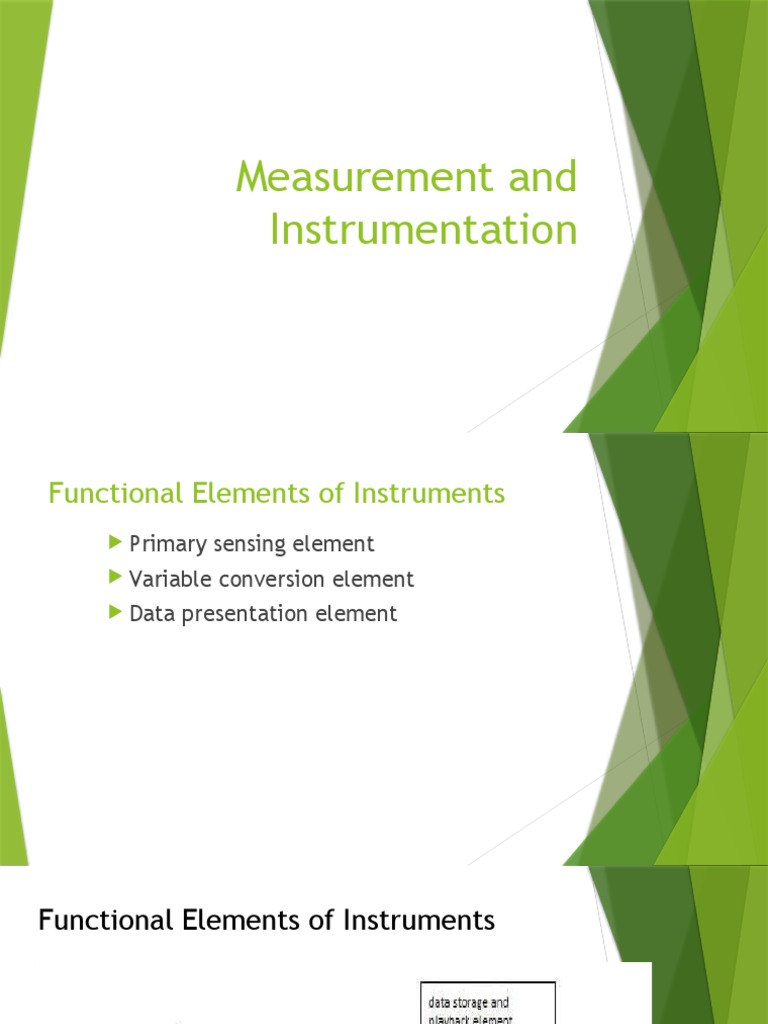Instrumentation is a multifaceted discipline within the broad realm of engineering and science, primarily involved in the design and application of instruments for measurement, monitoring, and control. An instrument is defined as a device that can measure, detect, or control physical quantities. The scope of instrumentation spans myriad fields, including physics, chemistry, biology, and engineering. This article endeavors to elucidate the foundational concepts of instruments and instrumentation, delving into their classifications, operational mechanisms, and practical applications.
At its core, the essence of an instrument lies in its ability to provide quantitative and qualitative data pertaining to physical phenomena. This data is pivotal for further analysis, facilitating experimental validation and the development of theoretical constructs. Instruments can be categorized into several types based on their functionalities, applications, and operational principles.
The first classification pertains to the **type of measurement** an instrument performs. Instruments can be broadly categorized into **analog** and **digital** devices. Analog instruments provide continuous measurement, often represented on a scale—think of a traditional thermometer or a dial gauge. Conversely, digital instruments yield discrete readings, converting the measured signal into numerical values for clear interpretation. Common examples include digital multimeters and electronic balances. The shift from analog to digital instrumentation has revolutionized accuracy and user-friendliness in measurement.
Within the realm of measurement types, further subdivisions occur based on the physical quantities being measured. Instruments may be employed to measure **mechanical**, **electrical**, **thermal**, or **chemical** parameters. Mechanical instruments, like pressure gauges and accelerometers, measure forces, pressures, and accelerations. Electrical instruments such as oscilloscopes and voltmeters are critical in assessing voltage, current, and resistance, offering insights vital for electronic circuit analysis.
Another pivotal classification revolves around the **application domain**. In laboratory settings, highly specialized instruments are employed to conduct precise experiments. For example, spectrophotometers are indispensable in chemistry for assessing the absorption of light by substances, while gas chromatographs are vital for separating and analyzing compounds. In the industrial domain, instrumentation is crucial for process control, encompassing systems such as flow meters and temperature controllers, which monitor and maintain optimal conditions within manufacturing processes.
The operational mechanisms underlying various instruments are equally diverse and serve as the backbone for how measurements are obtained. For instance, a **thermocouple** operates on the principle of thermoelectricity, generating a voltage correlated to temperature differentials. Conversely, a **strain gauge**, which is often used in structural monitoring, operates by changing its electrical resistance in response to deformation, thereby translating mechanical strain into a measurable electrical signal.
Having established a classification framework, it is paramount to delve into the significance of instrumentation in advancing scientific knowledge and technological applications. One significant area is **control systems**, where instruments are essential for gathering feedback to regulate processes. Feedback loops—integral in systems such as automatic climate control in buildings—rely heavily on instrumentation, which ensures that variables such as temperature and humidity remain within desired thresholds.
Moreover, instrumentation is indispensable in the burgeoning field of **medical technology**. Devices such as MRI machines, CT scanners, and biosensors have fundamentally transformed diagnostic practices, enabling non-invasive assessments of physiological conditions. Here, accuracy and reliability of measurement are crucial, highlighting the need for rigorous calibration and validation of these instruments to ensure patient safety and effective treatment strategies.
Research and development efforts across various domains increasingly underscore the importance of sophisticated instrumentation. In environmental science, instruments are employed for monitoring air and water quality, measuring pollutants down to minuscule concentrations. In the realm of **astro-physics**, telescopes equipped with advanced sensors enable scientists to explore cosmic phenomena, subsequently yielding insights into the universe’s structure and behavior.
As technology advances, the future of instrumentation promises to intertwine with burgeoning fields such as **artificial intelligence** and **internet of things (IoT)**. Imagine instruments equipped with real-time data analysis capabilities, capable of self-calibration and autonomous operation. This potentiality could lead to unprecedented levels of precision and sophistication in measurements, fundamentally altering the landscape of various scientific and industrial fields.
In conclusion, understanding the intricacies of instruments and instrumentation not only enriches the knowledge base of scientists and engineers but also underpins the progress of technology across various domains. By navigating the classifications, principles, and applications of instrumentation, one gains a profound appreciation of its role as the linchpin in the tapestry of measurement science. The evolution of instruments is an ongoing narrative—one that continues to influence the trajectory of innovation and discovery across diverse fields.










